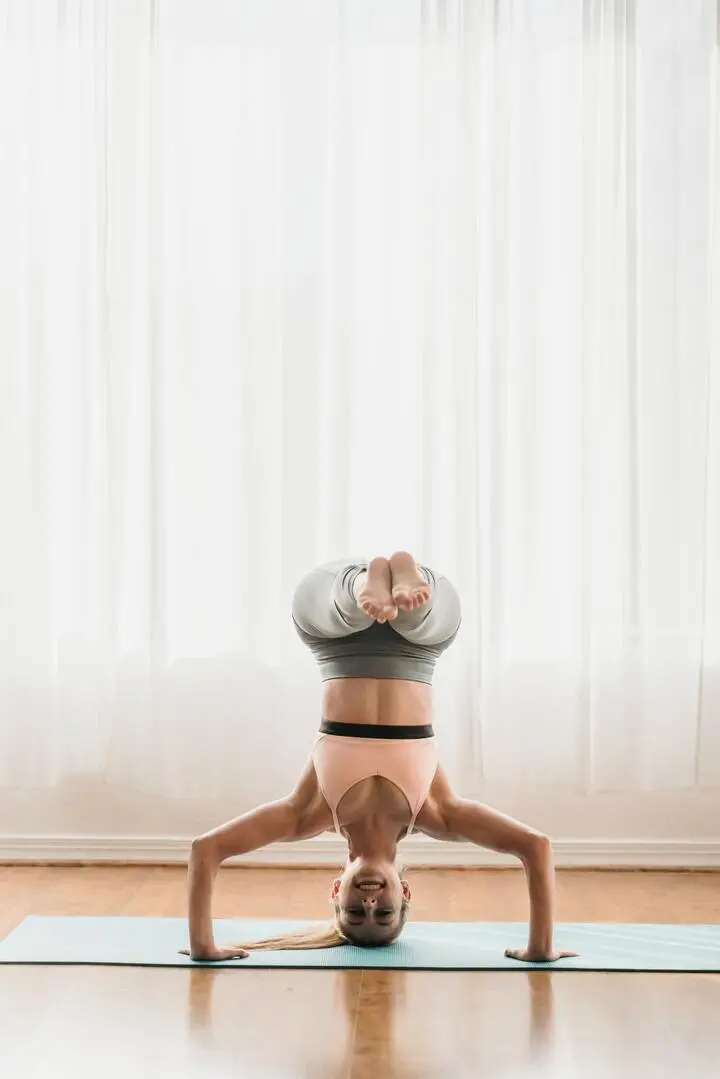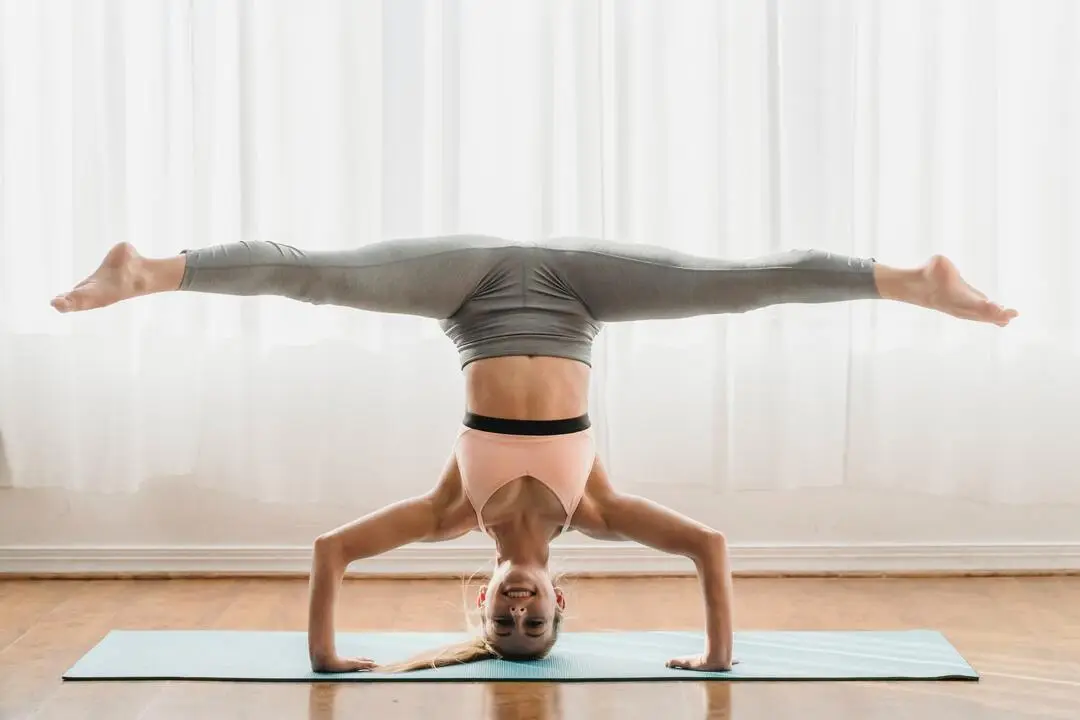Ashtanga Yoga: Transform Your Body and Mind

Ashtanga Yoga is a powerful and dynamic form of yoga that has been practiced for thousands of years. Developed by Pattabhi Jois, Ashtanga Yoga is a set sequence of postures that are linked together with breath and movement, creating a flowing and vigorous practice.
In this article, we will explore the primary series of Ashtanga Yoga, the benefits of practicing this style of yoga, and the history behind this ancient practice.
Whether you are a beginner or an experienced yogi, this guide will provide you with all the information you need to deepen your practice and understanding of Ashtanga Yoga.
What is Ashtanga Yoga?
Ashtanga Yoga is a style of yoga that emphasizes breath control, flowing movement, and a set sequence of postures. The practice is divided into six series of postures, each with its focus and level of difficulty.
The primary series, or Yoga Chikitsa, is the foundation of the practice and focuses on building strength, flexibility, and balance.
In Ashtanga Yoga, the postures are linked together with Vinyasa, a flowing movement that connects each posture with an inhale or an exhale. This creates a dynamic and vigorous practice that builds heat and detoxifies the body.
The Benefits of Ashtanga Yoga
Ashtanga yoga offers a wide range of benefits that cater to different aspects of one’s overall well-being. While it is a physically demanding practice that makes it ideal for athletes and individuals seeking a good workout, it also emphasizes breath control, poses, and meditation, which is fundamental to most styles of hatha yoga.
Consistent Ashtanga yoga practice <book> can enhance flexibility, breathing, balance, and endurance. It can also improve bone density, muscle strength, weight management, blood pressure, and stress levels.
Beyond the physical advantages, Ashtanga yoga can also support mental and spiritual wellness by promoting mental clarity, tranquility, and enhanced concentration in daily life.
Ashtanga Series of Posture Sequences
Ashtanga Yoga involves specific sequences of postures that practitioners follow in a structured manner. Typically, a session starts with performing five rounds of Sun Salutations A and B, followed by a series of standing poses repeated five times, and then a set of seated poses.
Once a practitioner has gained mastery over these foundational sequences, they can move on to more advanced sequences such as Advanced A, B, C, and D, which are guided by their instructor.
This structured approach to practicing Ashtanga Yoga helps practitioners to build strength, flexibility, and stamina, while also promoting a sense of inner calm and focus.
Purpose of Ashtanga
Ashtanga Yoga is a rigorous practice that aims to push practitioners beyond their physical, mental, and emotional limitations. Doing so helps them to develop mental clarity, increase physical strength, flexibility, and endurance, and cultivate a more mindful approach to breathing.
The structured and frequent nature of the practice is designed to facilitate rapid progress and overall wellness improvements.
Through the use of a set sequence of postures, Ashtanga Yoga provides a strong framework that enables practitioners to focus on the inner limbs of the yoga sutras. This can lead to greater self-awareness, inner peace, and a deeper connection between the mind and body.
Take Ashtanga Classes
Ashtanga classes come in two different styles – Led and Mysore. In a Led Ashtanga class, the teacher leads the participants through the primary, intermediate, and advanced series in unison.
On the other hand, Mysore-style Ashtanga is an open practice time where students move through the same sets of asanas in each sequence but at their own pace. Although you will have the guidance of a trained yoga teacher, you will need to learn and memorize the asanas and sequences on your own in this type of class.
Mysore-style Ashtanga allows for more personalized attention and hands-on adjustments from the teacher, making it a great option for students who are looking to deepen their practice.
Ashtanga vs Vinyasa Yoga Practice
Ashtanga and Vinyasa Yoga are two distinct styles of yoga. Ashtanga Yoga involves a set sequence of asanas, while Vinyasa Yoga is more improvisational and freestyle. In Ashtanga classes, students start and end the session by chanting Sanskrit mantras.
Additionally, Vinyasa Yoga is more commonly practiced in yoga studios and gyms. It often includes heated sessions with music playing in the background during the practice. While Ashtanga Yoga is more structured and predictable, Vinyasa Yoga offers more flexibility and variety in the sequence of asanas.
So, the main difference between these two styles of yoga comes down to their approach to practice. Ashtanga follows a fixed sequence, while Vinyasa is more creative and adaptable. Ultimately, it’s up to the individual practitioner to decide which style of yoga best suits their needs and preferences.
The Six Series of Ashtanga Yoga
Ashtanga Yoga is a traditional style of yoga that includes a set sequence of poses, mantras, and other practices. The asana (physical) portion of Ashtanga practice includes six series, each with different goals. In this article, we’ll explore the six series of Ashtanga Yoga and focus on the beginner-friendly Primary Series.
The Primary Series (Yoga Chikitsa)
The Primary Series, also known as Yoga Chikitsa, is the most well-known and beginner-friendly sequence of Ashtanga Yoga. It is often referred to as “yoga therapy” or “yoga for your health” because it focuses on realigning the body and improving overall health.
The Primary Series includes:
The Primary Series is designed to increase strength, flexibility, and stamina while calming the mind and reducing stress. It is an excellent starting point for beginners, but it can also be challenging for experienced practitioners.
The Intermediate Series (Nadishodhana)
The Intermediate Series, also known as Nadishodhana, is for those who have mastered the Primary Series and are ready for a more challenging practice. The Intermediate Series is designed to purify the nervous system and remove energy blockages. It includes:
The Intermediate Series is a dynamic and challenging practice that requires strength, flexibility, and balance. It can also be emotionally and mentally challenging as it requires a strong focus and concentration.
The Advanced Series (Sthira Bhaga)
The Advanced Series, also known as Sthira Bhaga, is divided into three parts: Advanced A, Advanced B, and Advanced C (also known as the “Rishi” Series).
These series are for advanced practitioners who have mastered the Primary and Intermediate Series and are ready for deeper practice.
Advanced A, or Third Series, includes:
Advanced B, or Fourth Series, includes:
Advanced C, or Fifth “Rishi” Series, includes:
Advanced D, or The Sixth Series, is the most advanced series of yoga practices and is only taught to a few advanced students by Pattabhi Jois. It includes advanced arm balances, inversions, backbends, and twists.
Understanding the Ashtanga Primary Series
Ashtanga Yoga, also known as power yoga, is a dynamic and physically demanding practice that follows a specific sequence of postures.
The opening sequence, known as Yoga Chikitsa or the Ashtanga primary series benefits, is designed to purify and strengthen the body and mind.
Now, we will take a closer look at the Ashtanga Primary Series, its seven parts, and the benefits of this transformative practice.
Section 1: Opening Mantra
The Ashtanga Yoga practice begins with an opening chant, which is a traditional Sanskrit mantra. This chant is used to focus the mind and prepare for physical practice. The purpose of chanting and reciting mantras in yoga is to activate the chakras and quiet the mind.
Section 2: Surya Namaskar A – 9 Asanas to be Repeated 5 Times
After the opening mantra, the Primary Series begins with Sun Salutation A. This sequence is designed to warm up the body and sync the breath with movement. The sequence includes nine core asanas that are repeated five times in a cyclical nature.
Section 3: Surya Namaskar B – 17 asanas to be Repeated 5 Times
After completing Sun Salutation A, the series moves on to Sun Salutation B, which includes 17 asanas. This sequence adds Chair Pose and Warrior I to the flow, creating more leg strengthening and balance challenges.
Section 4: Standing Poses
Following the seated postures, a sequence of standing poses that incorporate balancing, forward folds, and hip openers is introduced. This particular sequence often becomes a favored component of the practice for dedicated yogis as they become more proficient in their execution over time.
Section 5: Seated Poses
The seated series brings the breath back to a more restful state and is typically taught at a slightly slower pace. This section includes postures that require spinal twists, forward folds, and hip openers.
Section 6: Finishing Sequence
The Finishing Sequence is the most challenging section of the Primary Series. These poses are not for the faint of heart and should be learned under the guidance of a trained yoga instructor. This sequence includes advanced poses like Crow Pose and Wheel Pose.
Section 7: Closing Mantra
The Ashtanga Yoga practice ends with a closing chant, which is a traditional Sanskrit mantra. This chant is used to bring the mind and body to a state of rest.
Benefits of the Ashtanga Primary Series
The Ashtanga Primary Series is a powerful practice that offers many benefits for the body and mind. Some of the key benefits include:
Strength and Flexibility: The Ashtanga Primary Series is designed to strengthen and stretch every muscle in the body. Regular practice can improve overall strength and flexibility.
Focus and Concentration: The specific sequence of postures requires intense focus and concentration, which can improve mental clarity and focus in daily life.
Stress Relief: The practice of Ashtanga Yoga can help reduce stress and anxiety by calming the mind and releasing tension in the body.
Self-Awareness: The Primary Series requires practitioners to tune into their breath and body, which can improve self-awareness and help individuals connect with their inner selves.
Spiritual Connection: The use of mantras and the focus on the present moment can help individuals connect with their spiritual selves and find inner peace.
The Ashtanga Primary Series is a transformative practice that offers many benefits for the body and mind. By following a specific sequence of postures, practitioners can improve strength, flexibility, focus, and self-awareness.
While the Primary Series can be challenging, it is a rewarding practice that can lead to significant mental and physical transformations.

The Eight Limbs
Ashtanga Yoga, translated as “eight-limbed yoga” from Sanskrit, is rooted in the eight limbs outlined in the ancient text, The Yoga Sutras of Patanjali. This “eightfold path” to inner purification and enlightenment consists of moral, spiritual, and physical components.
The first two limbs, Yama and Niyama, focus on ethics and self-discipline respectively. Yamas encompass moral standards for living, including nonviolence, truthfulness, nonstealing, continence, and non-covetousness.
Niyamas, on the other hand, promotes self-discipline and spirituality through cleanliness, contentment, heat/fiery spiritual discipline, self-study, and surrender to a higher power.
Asanas, or physical postures, comprise the third limb and were originally intended to prepare the body for long periods of meditation. Pranayama, or deep breath control, is the fourth limb and essential for both yoga and meditation. Pratyahara, the fifth limb, focuses on sense control and withdrawal from external stimuli.
Dharana, the sixth limb, is concentration, while Dhyana, the seventh limb, is meditation and contemplation. The eighth and final limb, Samadhi, is the ultimate goal of complete absorption into the Universal bliss, which can bring higher levels of consciousness and inner peace.
Overall, Ashtanga Yoga encompasses a holistic approach to life that extends far beyond the physical practice on the mat.
Pattabhi Jois and the History of Ashtanga Yoga
Pattabhi Jois, also known as Guruji, was the founder of the first Ashtanga practice. He began studying yoga at a young age and eventually became a student of Krishnamacharya, one of the most influential yogis of the 20th century.
Jois developed the Ashtanga Yoga method in the 1930s and continued to refine the practice throughout his life. He opened the Ashtanga Yoga Research Institute in Mysore, India, where he taught the practice to yoga students from all over the world.
Today, Ashtanga Yoga continues to be practiced and taught all over the world, and the legacy of Pattabhi Jois lives on through his family and his students. Ashtanga Yoga has become one of the most popular styles of yoga due to its powerful physical and mental benefits.
One of the main benefits of Ashtanga Yoga is its emphasis on synchronizing breath with movement, which helps to create a deep connection between the body and the mind.
This connection is further strengthened through the use of drishti, or focused gaze, during the practice of each pose. The combination of breath, movement, and drishti allows practitioners to enter a state of flow, where they feel completely present and connected to their practice.
Another key benefit of Ashtanga Yoga is its ability to build strength, flexibility, and endurance. The primary series, which consists of a set sequence of poses, is designed to be challenging and demanding.
Through consistent practice, students can develop greater physical strength and flexibility, as well as increased mental resilience and focus.
Ashtanga Yoga also offers a wide range of physical benefits, including improved circulation, increased lung capacity, and enhanced immune function. The practice of pranayama, or yogic breathing techniques, can further help to strengthen the respiratory system and reduce stress and anxiety.
In addition to the physical benefits, Ashtanga Yoga is also known for its ability to promote mental clarity, emotional balance, and spiritual growth. The practice of Ashtanga Yoga encourages students to cultivate self-awareness and mindfulness, which can lead to greater insight and understanding of the self.
For those new to Ashtanga Yoga, it is recommended to begin with a beginner’s class or an introductory workshop. These classes typically focus on the basics of the practice, including proper alignment, breath control, and the foundational yoga poses of the primary series.
As students progress in their yoga practice, they may choose to explore the more advanced poses of the primary series or even the six series, which are reserved for the most experienced practitioners.
Many students also choose to deepen their practice by attending Mysore-style classes, which are self-led classes where students practice the sequence at their own pace with the guidance of a teacher.
Final Takeaway
Ashtanga Yoga is a powerful and transformative practice that offers numerous physical, mental, and spiritual benefits.
Whether you are a beginner or an experienced practitioner, there is always something new to discover and learn through the practice of Ashtanga Yoga. With dedication and commitment, this ancient tradition can help you cultivate greater strength, flexibility, focus, and inner peace.



